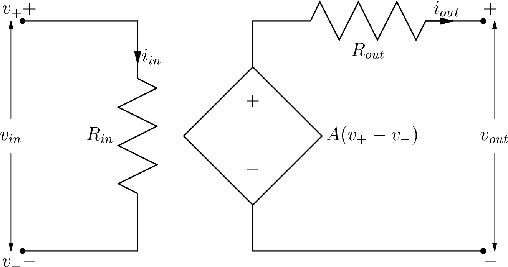 |
The circuit diagram of Figure 6 shows that opamps are quite complicated, and so we would like to use models which are simple and easy to use, while capturing the essential behaviour. In reality opamps are not perfect amplifiers, and so we can model them as in Figure 9.
This model takes into account input and output resistances, but does not take
into account high frequency behaviour nor saturation.
The equations for this model are
In general, we have
ANU Engineering - ENGN2211